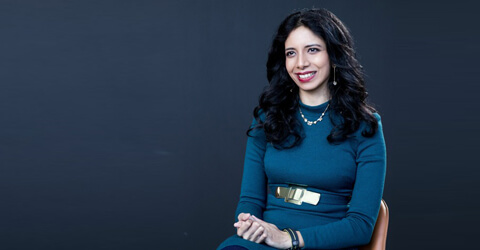Anima Anandkumar pioneered finding global optimal in non-convex problems, a big pain point in machine learning. Anima is an academician who has worked in both—industry and academia. She has contributed significantly to central AI and ML projects at Amazon.
Born and raised in the South Indian town of Mysore, Anima grew up with exceptional exposure to engineering. Her father was a qualified mechanical engineer from the reputed IIT Madras, and her mother held a degree in electronics engineering. It was no surprise that Anima harboured great affinity for math and science. Her trips with her father to the factory to see how machines work and visits to many industrial expos only fuelled her passion for all things science.
Anima was a deft student and ranked fourth in Mysore in her Grade 10 examination. She had the singular goal of securing admission into the most reputed college for engineering- The Indian Institute of Technology (IIT). She dedicated herself to studying for the entrance exam, referred to multiple college books, and took help from distant coaching whenever needed. Anima looked back fondly at that time and said in an interview with YourStory, “I treasure those times because I could get a concrete understanding of how to take this exam as a challenge. A lot of self-thinking and introspection helped me do that.”
After gruelling preparation, Anima secured a spot in IIT Madras in Electrical Engineering. After her third year, she spent a summer at IISc under Professor Y B Venkatesh, who introduced her to the concept of Gabor filters. This concept consequently helped in her research in Image processing that has allowed machines to process images and identify objects. The concept roused her and led to the life-changing decision of applying for a PhD that ultimately landed her at Cornell University that was the beginning of a woman leading the way forward in Machine Learning and Artificial Intelligence.
Her advisor Lang Tong played a vital role in nurturing the spirit of curiosity in her and made her brainstorm various solutions to the problems they were facing in the industry. This led to Anima’s unique approach to problem-solving and finding better alternatives for pre-existing issues. Right after her first year, she deep-dived into solving some of the biggest questions in the internet of things(IOT) and even ended up with major breakthroughs in the field.
She solved many groundbreaking questions in the field, like interconnecting many devices when they have limited battery and communication capabilities. In an interview, she said, “With network sensors, we aimed at coming up with algorithms that can do with lightweight communication mechanisms and be able to transmit information.” The key was to bring in the statistical model.
Her approach to work is simple, she says, “If there are wrong decisions, are there ways a human could intervene in a meaningful way and in a prompt manner to correct that. How can we design those processes?”
One of her first attempts showed that the bandwidth requirement (for transmitting data from sensors) could be drastically reduced by using statistical inference rather than sending in raw data. She also wrote a longer and more comprehensive journal article about this work and called it type-based communication. She said that the sensors should be sending in counts of how many entries they see of each type rather than the actual entries. This gives more efficient bandwidth saving because there’s no need to decode the sensors’ raw data.
She then joined UC Irvine as a faculty, at a time that was classified as the beginning of the big data revolution. Anima already having established her problem-solving capabilities then raised the bar and tried to check if tensors could solve the problem of reinforcement learning. She says, “Notion of intelligence comes from being able to adapt to changes in the environment. Most learning algorithms are passive, i.e. you already have a bunch of data which you’re processing and no change happens as the algorithm is learning.”
She is currently one of the leading women in the field of Artificial Intelligence and Machine Learning and has achieved various feats in the industry. She has worked on multiple AI projects in Amazon, including Amazon Rekognition, Amazon Lex and Amazon Polly. She is also the recipient of several awards and honours, such as the Bren named Chair Professorship at Caltech, Alfred. P. Sloan Fellowship, Young Investigator awards from the Air Force and Army research offices, Faculty fellowships from Microsoft, Google, Facebook, Adobe, and several best paper awards.
Her exemplary work got her featured on the world stage. She was recently nominated to the World Economic Forum’s Expert Network to share her adept insights on various forefronts. She has consistently made efforts to better her industry by democratizing it, promoting ethical use and improving diversity and inclusion. She was awarded the excellent tech award 2018 by NYTimes for her efforts.
In conclusion, her advice to all new developers is, “think about your work in a multidimensional way – reflect on the domain and the impact. For instance, ‘Think of a facial recognition application – if it is only working for a subset of the population then there is a discrimination.’








